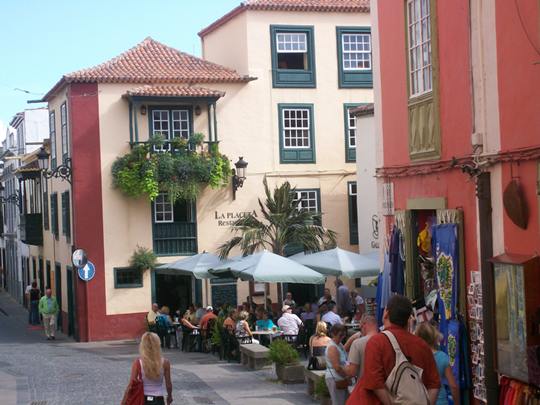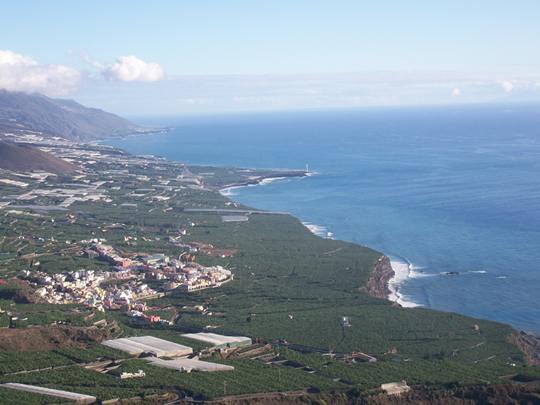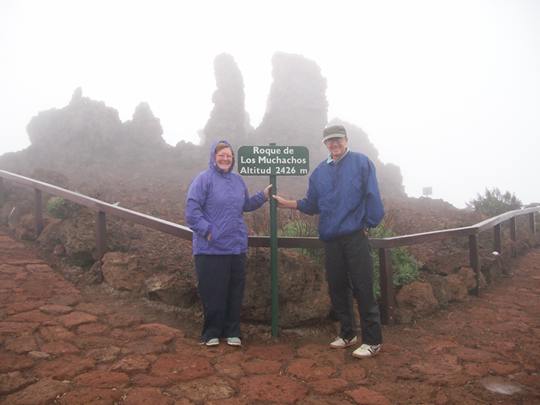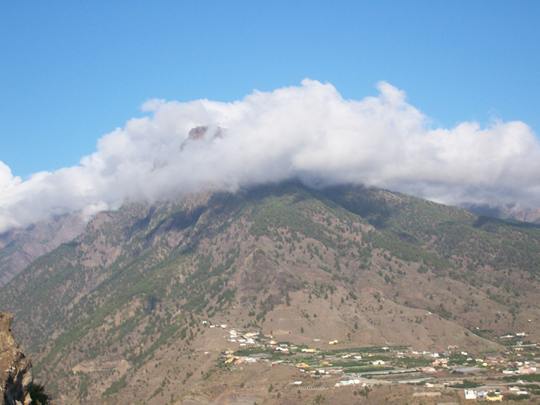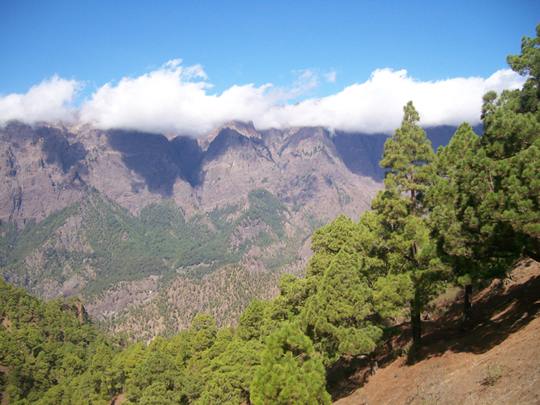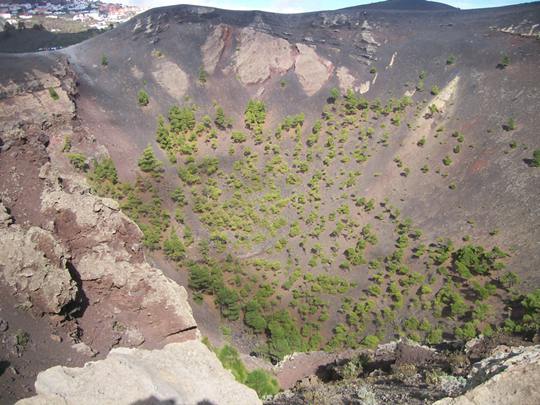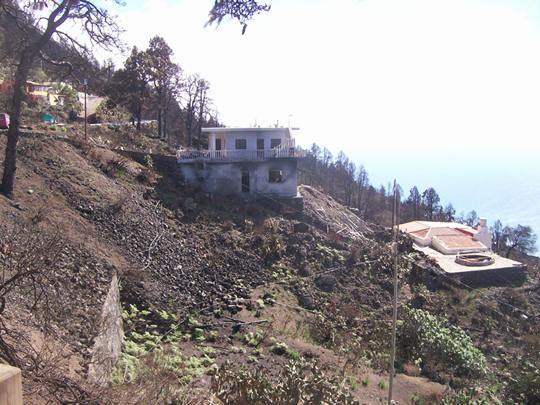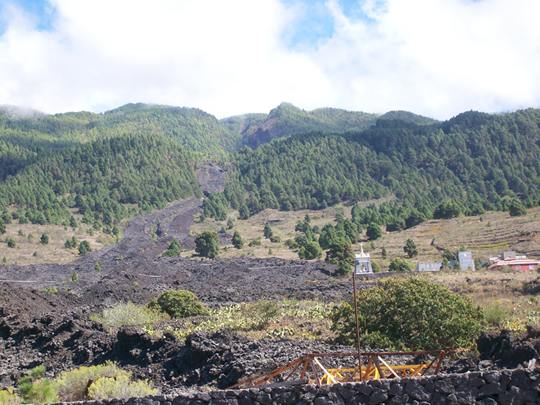Lanzarote to La Palma N28 41 W17 46

|
31 Lanzarote to Tenerife and Beautiful La Palma We left Rubicon glad to be on the move again after 3 weeks of flying about (literally). The winds were favourable, if rather light, and we made good progress toward Tenerife.Our intention was to go to the southern end of Tenerife but the wind meant that we made better speed to the north so we heaved in the sheets and arrived at a pretty little bay sheltered by a headland at the Northern tip of the island. It was hard to believe that this was the same island with All Day Breakfasts, Fish and Chips and late night discos at the resort of Los Christianos. There was not even a road ashore. We spent the day resting and recuperating from our night watches before leaving in the evening for La Palma. La Palma is wonderful. It puts Madeira in the shade. Tourism is evident but on a much smaller scale than on any of the other large islands we have visited. We arrived in time to go ashore and see the town of Santa Cruz. Quite small but with a complete range of shops and services, many of which appeared rather upmarket compared to some of the town centres we have seen in other parts of Spain. Many of their attractive old buildings are well preserved, with the traditional old enclosed verandas still in use and better looked after than elsewhere.The pedestrianised main street was lively with the Spanish parading up and down. We soon found a nice looking restaurant in which to celebrate our 27th wedding anniversary, it was called La Placeta but on first sight we thought it was La Placenta! We were served mojos then ate dorado, canarian salted potatoes and salad washed down with some excellent La Palma wine, followed by homemade chocolate mouse on "an orange mirror"....delicious!
La Placeta, a very enjoyable restaurant. The next morning a giant cruise ship was in harbour and the atmosphere was more touristy with more of the locals clearly trying to make a some money while the gold mine was moored up. However, we had a good day exploring the town and visiting the local museum, followed by tapas in a pleasant bar. The next 2 days we had a hire car and explored further afield. We toured the north of the island on the first day, including going to the highest point of Roque de la Muchachos at 2426 metres on an island about twice the size of the Isle of Wight!
The views are stunning...apparently. We were swirled in cloud the whole time we were on the peak and missed the big cauldron that was below us. The island is very green and we soon discovered why: billions of very large droplets showered down for quite a time. Then it cleared and the sun dried it out pretty quickly.
Even at this height plants flourished: Spanish broom, cistus and gentians, which are protected species here, were growing very happily in the swirling cloud cover. The road system is dramatic. We lost track of the number of hairpins. Thankfully the island is very traffic free, driving was hard work and mostly in second gear but fun. As we drove up the mountain the vegetation went from banana plantations to vineyards to chestnut groves to pine woods to moorland scrub. The mountain is high enough to have snow and ice on occasion in the winter. After our excursion up the mountain we drove to a grove in the laurel forest where there were rock carvings left by the original people before the Spanish came in the 15th century killing most of them and assimilating the rest. There were intriguing swirls and geometrical patterns left in the rock beside the caves that the people apparently had lived in. There were a number of theories: that they had spiritual significance, that they were connected with sun reverence, were related to fertility rites. We managed to think of many other possible explanations for the designs, most more interesting than the archaeologists' explanations. There was a good visitor centre that gave some insight into these primitive people who seemed to favour some of the more inaccessible places on the island. The Spanish and Canarians in particular seem adept at presentation and simplicity. The visitors centres, museums and exhibitions we have seen whilst in Spain and Canaria have been excellent. Usually explanatory text is in four languages: Spanish, German, English and French. We have met no other English people here but plenty of Germans and a few French.
Spiral Carving The drive back included crossing the massive ravine that splits in half the gigantic caldera that dominates the North of the island. The following day we explored the southern half of the island starting by climbing up by car then on foot to the middle of the caldera. This time the weather was kinder to us and the views were very dramatic, although the mountain top and its observatories were still shrouded in a cap of cloud. Another excellent visitor centre explained the geology, hydrology, ecology and history of the caldera.
One of the things we had noticed the previous day is how many pine trees showed evidence of fire. Forest fires are common in the summer months as the pine needles that carpet the ground make excellent tinder and burn very quickly but the Canarian pines have very thick bark. As there is little in the way of understory, the fires pass quickly and although the live needles may be burnt off, new ones appear within months direct from the bark and the trees are little damaged.
In the afternoon we visited the San Antonio volcano in the South of the island. This erupted in 1971 with enough warning for the locals to flee. It left a large area of newly formed land in the sea which was quickly seized on by the locals and turned into banana plantations utilizing the fertile minerals of the newly created land. Another eruption is overdue so no doubt the local banana barons are being thwarted in their expansionist plans.
This part of the island had a bad fire in August of this year and there was much evidence of burnt trees, vines and some buildings.However the locals we spoke to said that the International Press who got hold of the story had exaggerated its impact and that they were used to such events.The trees, as we had learnt, were already sending out new shoots even where the trunks were blackened by fire.
On a lighter note we were travelling along one of the few dual carriageways when a police car flagged us to slow down, followed by another police car defending a 3rd police car which was extensively damaged having taken a corner too fast and ploughed into the rock wall skirting the road. Red faces all round but we had a good smile. We will be sad to leave La Palma, but we need to be heading off to sea soon if we are to make Grenada in time for Hattie and Peter.
|
